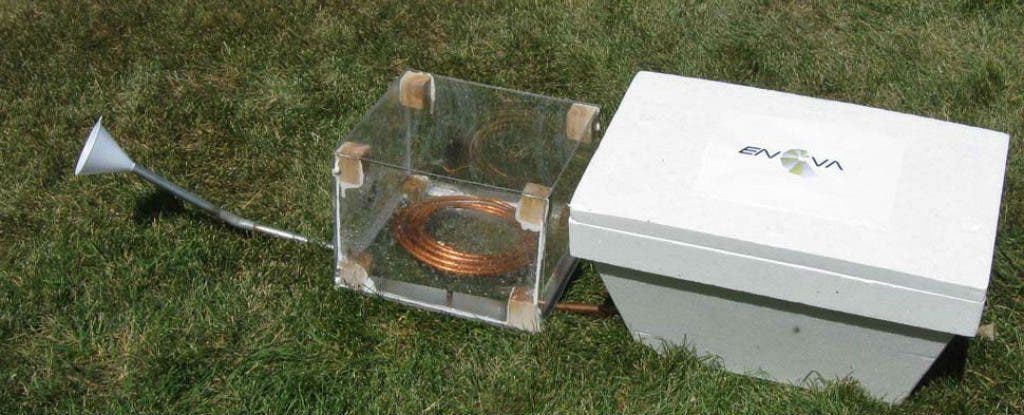For most of us, a refrigerator is simply a given – we couldn’t even imagine life without it. But for over 1.3 billion in the world, that’s not the reality, and one of the causes is the lack of access to electricity. With that in mind, a team of students in Canada invented a cheap, portable cooling device that doesn’t need any electricity.
“We thought it would be good to decrease the amount of food waste in the world, and we came up with this design because it’s easy to build and the materials are relatively cheap,” one of the students, Michelle Zhou from the University of Calgary, said in an interview.
The invention won first place in the student category of the 2015 Biomimicry Global Design Challenge, which asks researchers but also students to address critical sustainability issues with nature-inspired solutions. This year seems to have been specifically focused on food.
The way this works is it passively draws warm ambient air through the funnel, which is fed into a pipe that’s been buried underground. This already somewhat cools up the air, which is fed to coiled cooper pipe that’s been immersed in water in the evaporation chamber. The evaporation processed is sped up by a solar-powered fan. The water evaporates around the pipe, chills the air inside and then goes back underground before entering the refrigeration chamber. Of course, this mechanism isn’t anywhere near as efficient or as large as a regular fridge, but it can do very well at keeping produce cool, ensuring that they last way longer. It’s especially suitable for remote areas.
The next step is to ensure a constant temperature of 4.5 degrees Celsius, which is needed to keep most foods from spoiling.
“Anywhere from a quarter to half of the world’s food goes to waste every year, and in rural populations – about 70 percent of the people in rural Africa don’t have access to electricity,” team member Jorge Zapote told CBC News. “So this at the moment uses a tiny bit of electricity from a solar panel, but the end design is to use zero electricity. So this could really help people in those areas.”










